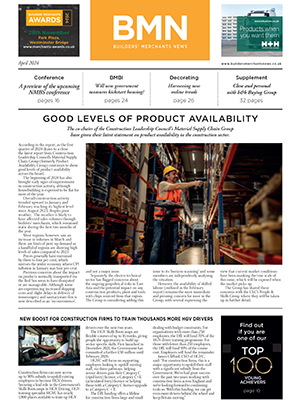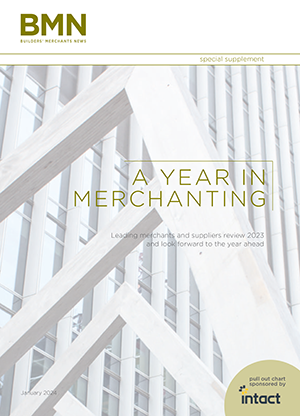Do you remember the ZX81? It was released in 1981, cost £69.95, and didn’t do a lot. But it was exciting, and for many of us it heralded the dawning of a new age. In the last three and a half decades we’ve seen technology transform so many aspects of daily life that we often forget what things were like before we all had computers in our pockets.
The amount of data available to us is also growing exponentially. An operation like a builders’ merchant produces an amazing amount of trackable information. It is increasingly easy to take in details of every SKU stocked or sold in each outlet, and to dig into that data in any way you choose: by item, product group, date, store location, region, weather conditions, or even promotional discount.
As such, there are tasks – like re-ordering – that are better left to computers. The results speak for themselves; we’re used to seeing inventory cut by 30% or more, availability simultaneously increased to 98%, plus more sales, less waste and higher profits, all thanks to good supply chain management technology.
Having worked with a number of builders’ merchants across Europe, the gains they make when implementing supply chain systems fall into two broad categories: the quick operational wins and the longer term, strategic improvements.
Firstly, staff time is used more effectively. In the case of Onninen, a multi-national builders’ merchant employing around 1,500 people across Scandinavia, Finland, Russia, Poland and the Baltic states, some 90% of SKUs were moved over to automated replenishment. Typically, even large orders only get a brief double-check before being processed. People might sigh and scratch their heads when presented with endless spreadsheets but computers don’t. With good historic sales data, it’s simple for the system to figure out stock levels, seasonal sales variations and safety stock levels.
It’s also simple to automate purchasing routines, so when stock levels fall below a certain point the system calculates demand and works out the optimal order size based on display requirements, promotion plans, suppliers’ rules and so forth. All these parameters can be set and updated centrally based on the collective expertise of the purchasing team or managers. The system is less prone to staff absence and makes it easier to recruit new planners because most of the essential rules are already in the system.
Having taken the grunt work off the shoulders of experienced staff, Onninen deployed them on value-adding tasks such as listening to customers, developing supplier and customer relationships, drawing up promotional strategies, sourcing new products and negotiating the best deals.
Secondly, more accurate demand forecasts mean increased availability. Good forecasting gives you an accurate picture of what your customers are likely to need well in advance, which makes keeping availability rates high relatively simple.
A good supply chain system is able to break down demand patterns from previous years, take into account factors like time of year, weather, or whether there was a promotion, and combine it with the latest data (for instance that the economy is buoyant and sales last month were up 5% on the same month the pervious year) and leave you forewarned and forearmed. Good availability has a real impact on sales and on customer relationships. You get to be the place where people know they’ll find what they need. Many of the builders’ merchants we work with maintain availability at levels approaching 99% – and of course being out of stock risks losing sales.
Lastly, good supply chain technology can reduce your inventory and free up capital to invest elsewhere. More accurate forecasts don’t just allow you to keep what you need in stock, they also allow you not to keep what you don’t. You can optimise safety stock levels so you always have a certain number of days’ excess supply to hand. The builders’ merchants RELEX works with in Germany, Finland and Scandinavia have cut their inventory by around 30%, which frees up cash as well as space. Less to store means lower storage costs and/or more space for new lines.
Tommi Ylinen is managing director of RELEX UK, provider of supply chain solutions.







